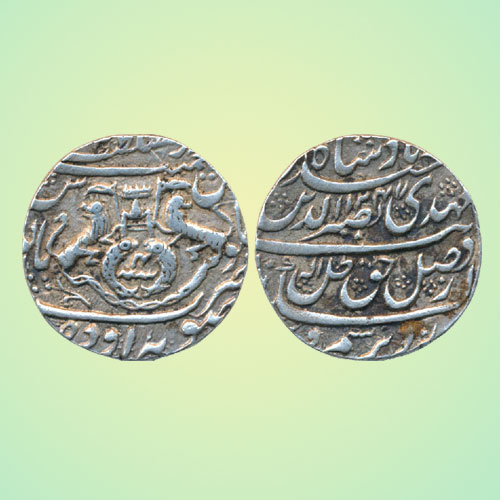Nasir-ud-din Haider Silver Rupee of Princely State of Awadh
2020-04-01 Wed
Awadh was a Princely State during the British rule in India. This state was governed by the Nawabs/Wazir on behalf of the Mughal Empire between the 18th and 19th Centuries. The origin of Princely State of Awadh can be traced from the ancient Hindu kingdom of Kosala with the Ayodhya as its capital. The reference of Awadh can also be found in medieval times during the reign of Mughal Emperor Akbar. In the British historical text, it is mention as ‘Audh’ or ‘Oudh’. The region is located in the Indian states of Uttar Pradesh. The rulers of Awadh traced their origin from Muhammad Amin (Saadat Khan) who attached himself to the court of Muhammad Shah. He was made the subedar of Awadh.This silver rupee was issued by Nasir-ud-Din Haider of Pricely State Awadh. Nasir-ud-Din Haider was the second king of Awadh, he ruled Awadh from 1827 CE to 1837 CE. He sat on the throne of Awadh after the death of his father Ghazi-ud-din Haidar. The obverse of this coin is inscribed with the name and title of the king. The reverse of this coin depicts 'Crown' flanked by rampant lions holding a flag, two upright fish below.
Image Courtesy: Todywalla Auction
Latest News
-
Mahatma
2024-04-25 ThuIndia Post issued a commemorative postage stamp on #LalaHansraj, also known as Mahatma Hansraj for�...
-
Berar Mint of Muhammad Akbar
2024-04-25 ThuBerar was a kingdom located in the Deccan region, with Elichpur as its capital. It was one of the Su...
-
Janma Kalnayak of Bhagwan Mahavir
2024-04-24 WedOn 21st April 2024 which was the 2550th Janma Kalnyanak of Bhagwan Mahavir Swami, PM Modi unveile...
-
Gold Pagoda of Vijaynagar Empire King Deva Raya I
2024-04-10 WedKing Deva Raya I of the Vijayanagara Empire was a patron of Kannada literature and architecture. He ...
-
Silver Denarius of Septimus Severus
2024-04-05 FriLucius Septimius Severus served as the Roman emperor from 193 to 211 AD. Severus sat on the throne o...

